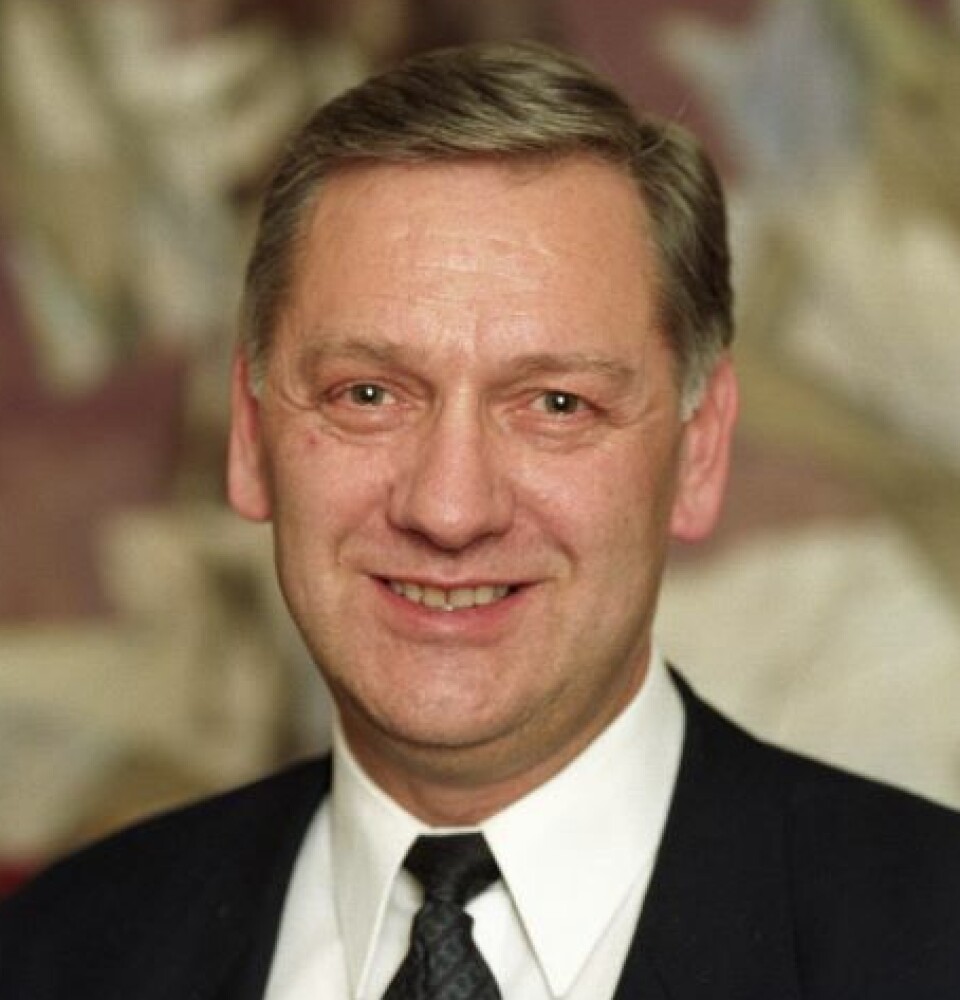THIS CONTENT IS BROUGHT TO YOU BY University of Oslo - read more

Norway's relationship with Russia:
"The fundamental principle still applies"
In a time of high tension between Russia and the West, Norway still benefits from the principle of balance between deterrence and reassurance, James Cameron claims.
Norway has a smaller population than Russia, a smaller territory, less military equipment, and no nuclear weapons. Yet, the country has managed to avoid war with its neighbour to the east.
Perhaps part of the reason lies in the political strategy that Norway has followed since the aftermath of World War II: A balance between deterrence and reassurance.
Associate professor of history, James Cameron at the University of Oslo, argues that this strategy still holds true to a large extent, even though Norway's relationship with Russia has deteriorated in recent years.
However, finding the right balance can be challenging, he points out.

“We can draw valuable lessons from Norway's experiences during the Cold War,” says Cameron, who recently published an article on the topic in the Journal of Strategic Studies.
Guiding principles for security policy
It was the Norwegian political scientist and Labour Party politician Johan Jørgen Holst who, in 1967, created a theoretical framework for Norway's policy towards the Soviet Union.
To some extent, the policy was already established, but Holst, then 30 years old, introduced the concepts of deterrence and reassurance:
He wrote that Norway, on the one hand, would deter the Soviet Union through its membership in NATO and close ties to the United States.
On the other hand, the country aimed to reassure Moscow that Norway would not become a base for a NATO attack.
Norway declined to base NATO troops and nuclear weapons on its territory in peacetime. The country also refused NATO exercises near the border of the Soviet Union, as well as maritime and military air activities.
With such restrictions, Norway stood apart from many other countries, Cameron explains.
7,000 nuclear weapons, but not a single one in Norway
“At the end of the 1960s, a total of 7,000 American nuclear weapons were deployed across Western Europe, but not a single one in Norway. Holst questioned how such a policy could be explained, and that's how he developed his theories,” Cameron explains.
Looking back, it is often difficult to grasp the fundamental significance of such a theoretical contribution, Cameron believes.
“Today, we take these concepts for granted. However, when an understanding evolves to become something self-evident and a foundation for security policy for many years to come, it says something about how important it may have been. All along, Norwegian policy has been about finding the right balance between deterrence and reassurance,” he says.
Both a scientist and a politician
Johan Jørgen Holst was a scientist. He spent several years at prestigious universities in the USA, at a time when researchers like economist Thomas C. Schelling were developing their game-theoretical ideas about nuclear weapons.
Holst was also a Norwegian politician. He would become both Minister of Defence and Minister of Foreign Affairs and was instrumental in the Oslo Accords in the Middle East in 1993. He passed away from illness in January 1994.
Cameron believes that this mix - coming from and remaining loyal to a small country while being exposed to intellectual thinkers in a superpower - provided Holst with a unique starting point.
“In the 1960s, many were talking and writing about nuclear weapons strategies and stability. But what if you're not a superpower? How do you explain your position in a major conflict, and how do you develop a strategy? Others wrote about this as well, but Holst's theories stood out,” Cameron explains.
We can learn from past failures
Since the 1960s, Norway and the West have had both a cold and a warmer relationship with the Soviet Union and Russia.
A development that seemed to be heading towards friendship in the 1990s would once again deteriorate, especially when Russia initiated a full-scale invasion against Ukraine in 2022.
Cameron believes we can learn something from the experiences of the Cold War, from Holst's own bitter experiences.
During the transition between the 1970s and 80s, the relationship between the West and the Soviet Union was poor. At the same time, Norway, especially the Labour Party, strongly desired to maintain a policy of reassurance towards the Soviet Union.
At this time, Holst was a state secretary, first in the Ministry of Defence, and then in the Ministry of Foreign Affairs.
“He tried to maintain a good relationship with the USA and initially succeeded,” Cameron says.
Did not want nuclear weapons in the Nordic region
Holst was instrumental in securing Norwegian support for NATO's decision to deploy a new generation of nuclear weapons to Europe.
A debate about the deployment of American military equipment in Norway ended with the understanding that it was acceptable if the equipment was placed in Trøndelag, not in Northern Norway. This solely applied to conventional weapons and not systems capable of delivering nuclear weapons.

But then things escalated. In his New Year's speech in 1981, then-Prime Minister Odvar Nordli announced his support for the establishment of a Nordic nuclear-weapon-free zone, an idea Finland had advocated for earlier.
“The timing was terrible. The Soviet Union was in the process of deploying a new generation of nuclear weapons, which NATO was trying to balance out. Most allies saw Norway's new position as an obstacle,” says Cameron.
Holst tried for a long time to find a solution. But when a delegation, including Foreign Minister Knut Olav Frydenlund, travelled to the USA, they were told by one of the US secretaries that if Norway joined a nuclear-weapon-free zone, he would not recommend President Reagan to protect Norway in case of war.
The greatest chance for success
Norway eventually had to scale down its efforts. There are no nuclear weapons in the Nordic region today, but there is also no international agreement prohibiting other countries from deploying their nuclear weapons in the region.
This became Holst's first unsuccessful attempt to find a mutually agreed Norwegian-American balance between deterrence and reassurance, according to Cameron.
The researcher believes that we can learn something from this example today.
“I believe it's possible to maintain a certain level of reassurance even when the relationship between East and West is poor,” he says, and continues:
“But perhaps the best way to do so when the relationship is deteriorating is not to initiate completely new initiatives for reassurance that appear detached from the rest of the Allies' policies."
He believes success is more likely when deterrent actions are combined with reassuring elements to downplay them.
This is what Holst and his contemporaries did when they accepted the deployment of American military equipment in Norway – but no further north than Trøndelag. Holst managed to convince the Americans that Trøndelag was a good location, also for the Americans themselves.
Is Russia really reassured?
Times change, and so do politics.
Nuclear weapons are currently a less important part of NATO's military strategies than they were before, partly because NATO's collective conventional forces are now more balanced against the Russian threat.
New technologies have also become more important, according to Cameron.
Questions have been raised regarding how Russia perceives Norway's security policy.
"The fact that Norway, at its own discretion, signals and practices both deterrence and reassurance does not mean that Russia perceives it that way," Julie Wilhelmsen wrote in 2022 (link in Norwegian). She is a researcher at the Norwegian Institute of International Affairs.
In his article, Cameron writes that historically, the reassuring measures may not have primarily reassured Moscow, but they have been just as important in maintaining domestic support for increased deterrence.
“Therefore, I believe that reassurance will continue to be important in Norwegian politics, even if the primary benefit may be to secure domestic consent for increased deterrence,” he says.
References:
Cameron, J. Deterrence, reassurance and strategic stability: The enduring relevance of Johan Jørgen Holst, Journal of Strategic Studies, vol. 47, 2024. DOI: 10.1080/01402390.2024.2321135
Holst, J.J. Norsk sikkerhetspolitikk i strategisk perspektiv. Bind I: Analyse (Norwegian security policy from a strategic perspective. Volume I: Analysis), Norwegian Institute of International Affairs, 1967.

This content is paid for and presented by the University of Oslo
This content is created by the University of Oslo's communication staff, who use this platform to communicate science and share results from research with the public. The University of Oslo is one of more than 80 owners of ScienceNorway.no. Read more here.
More content from the University of Oslo:
-
Queer opera singers: “I was too feminine, too ‘gay.’ I heard that on opera stages in both Asia and Europe”
-
Putin’s dream of the perfect family
-
How international standards are transforming the world
-
A researcher has listened to 480 versions of Hitler's favourite music. This is what he found
-
Researcher: "AI weakens our judgement"
-
New, worrying trend among incels, according to researcher




































